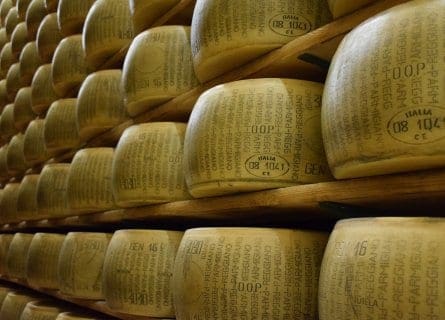
Italian Cheese Guide: Explore Diverse Varieties & Regional Specialties
March 6, 2017
Discover Italy's rich cheese variety, from Parmigiano to unique regional specialties marked by DOP/IGT quality. Explore Italy's cheese landscape.
While Spain and Italy maybe some of Europe’s more famed cured ham producers, France offers food lovers some stellar versions. The ancient port city of Bayonne at the heart of the French Basque country has prepared succulent hams since at least the 12th century. Indeed, today, raw specialty Bayonne Ham is renowned as one of France’s finest gastronomic offerings to the world. It is produced mainly in the Bearn region and must be aged for at least seven months before release. The resulting flavor is simply delicious: a light, almost translucent ham with a slightly sweet taste, gorgeous nutty aroma, and delicate texture. Of course, other regions are also renowned for their cured hams, including Jambon de Savoie, Jambon d’Ardèche and Jambon d’Auvergne.
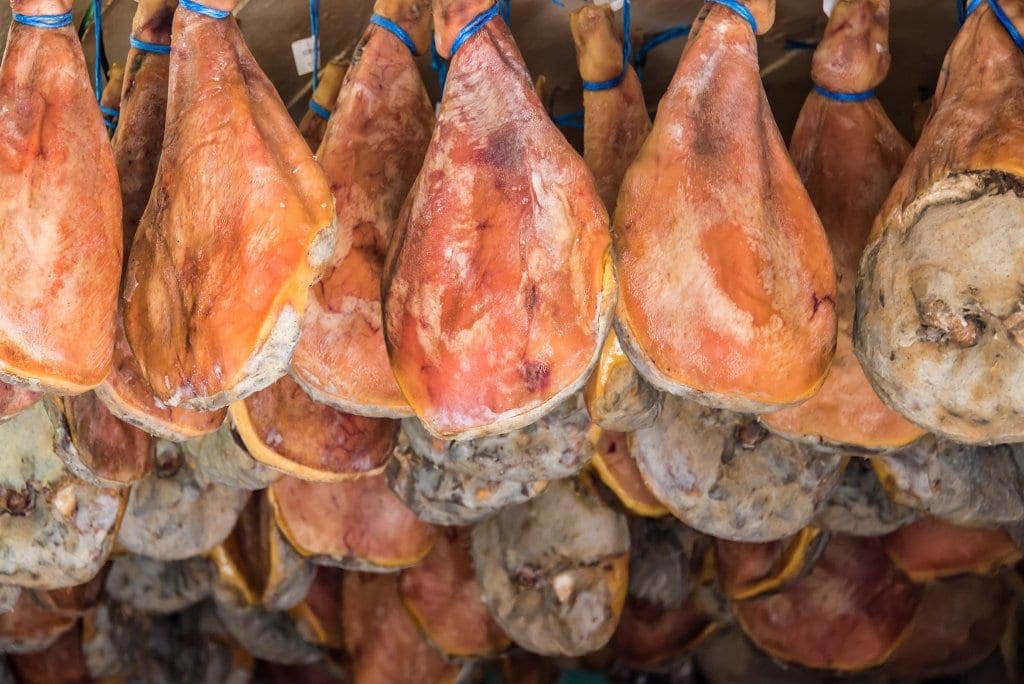
Bayonne ham has developed over the ages from a purely practical method of preserving food that would quickly spoil into a celebrated art form. Even by the 14th century, Bayonne’s reputation for exquisite hams was spreading across France, and an annual fair and competition celebrating cured meats was held in the city. In the 1990s, Bayonne ham was protected under EU appellation law and is now a PGI product or Protected Designation of Origin. Every aspect of the production process is strictly controlled by the regional authorities in the city of Pau, from the origin of the pork to the animals’ diet and method of slaughter and aging.
The meat must be sourced from one of eight clearly defined pig breeds reared across quite a large area from the Midi-Pyrénées in the south to Poitou-Charentes in the north-west and the Aude. However, production is confined to the Adour Basin in the Pays Basque; typically, the pigs are slaughtered in October/November and preserved with locally produced sea- salt from the Adour estuary. The hind legs are then dried out in special conditions for at least seven months; today, many producers use modern temperature and humidity controls to reproduce the seasonal temperatures. Most Bayonne hams are also rubbed with a paste of lard and flour to keep them moist throughout the warmer and drier spring and summer months.
Once this important preserving process is complete, the ham is marked with the traditional Basque Cross or Lauburu and put up for sale. Good Bayonne ham has a simply wonderfully delicate flavor and will keep for another year if stored in cool conditions. Connoisseurs recommend simply using the ham as the perfect starter, or it is a sublime addition to salads and lighter stews. Crisp whites or lighter reds like Chablis and Chinon go well with Bayonne Ham or Basque cider for a traditional treat!
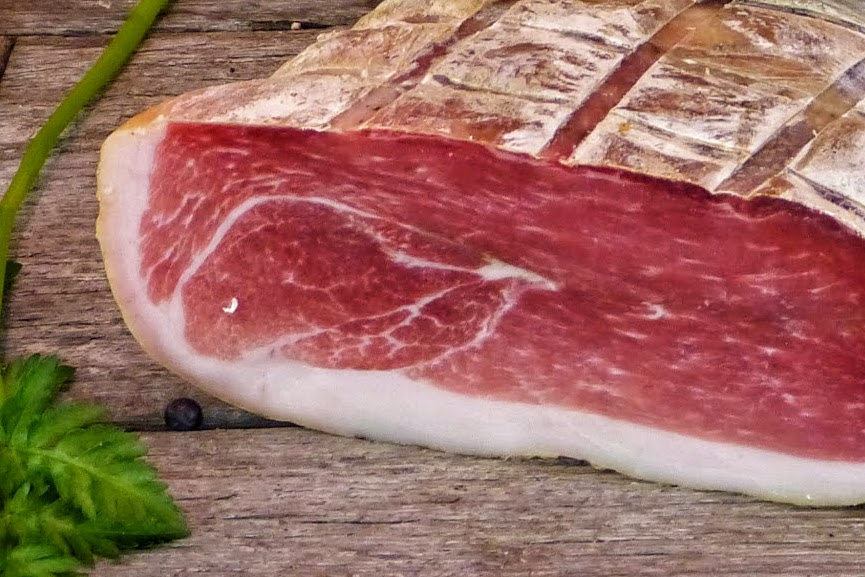
Fine food connoisseurs should also try the utterly delectable Jambon de Savoie, made in the Savoie region in the French Alps. Produced under similarly strict conditions as Bayonne ham, the hand-salted hams are dried for a minimum of 12 months; the best suppliers use driers located high up in the Alps at altitudes of between 650-700 m. This long, gentle process creates a salty, richer-tasting ham than its Bayonne counterpart and is delicious as part of a platter of charcuterie or in casseroles.
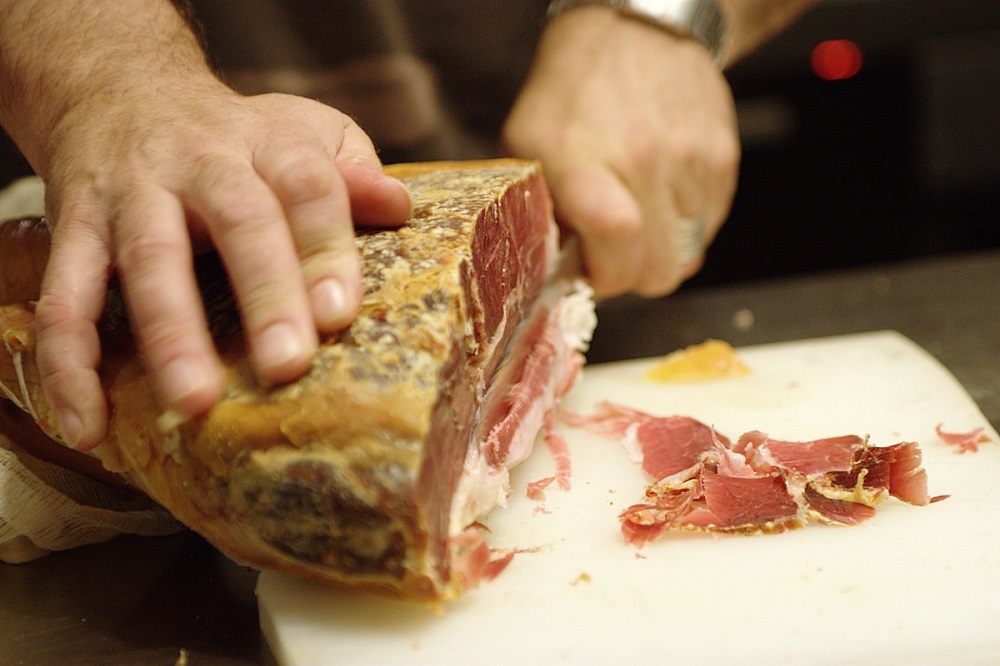
The Ardeche region in southern France is another source of exquisite, aged hams. Pigs roam wild in the Ardeche mountains and are only fed natural feed and then slaughtered to strict specifications. The minimum curing period for Ardeche ham is 12 months, although most quality-conscious producers dry their products for about 18 months. The ham is rich in flavor, a dark-colored salty ham with a potent aroma.
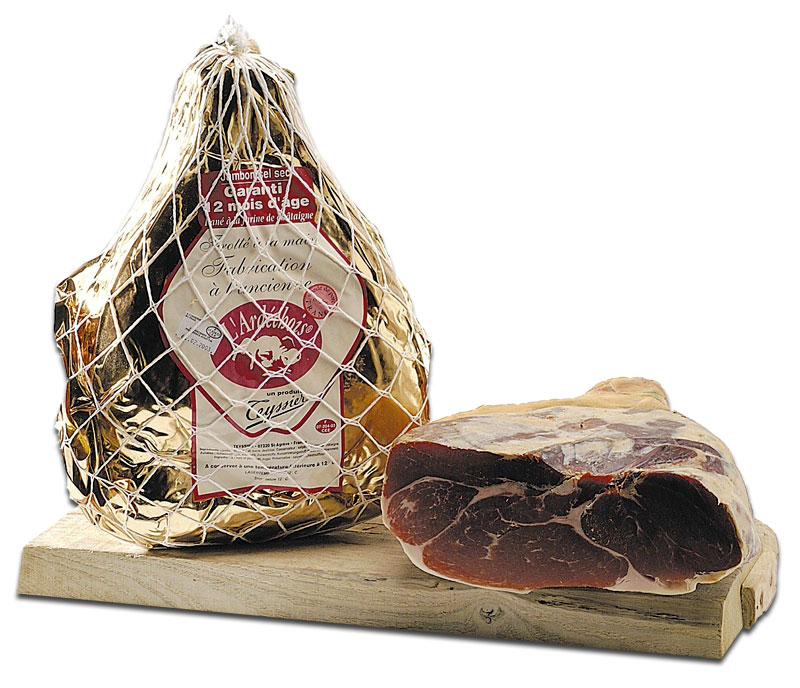
Lastly, connoisseurs must try the rare and sublime smoked Jambon de Lacaune from the Tarn region in south-western France. Produced in Gijou valley, the pigs used for Jambon de Lacaune can only be reared and bred in three specified areas in the Tarn, Aveyron, and Lot departments. After slaughter, the ham must be cured for at least nine months before release. The resulting ham is a firm favorite with chefs and celebrity chef Rick Stein likened it to Spain’s finest Serrano ham, top Lacaune ham has a gorgeous marbling of fat and an intense, full flavor. Serve it with melon, figs, or a light salad with a slightly chilled glass of Pinot Noir – gastronomic heaven!
If you would like us to customize an exclusive luxury tour, contact us and let us know your travel plans. We offer luxury food and wine tours for private groups of a mininium two guests. In addition, all of our private, chauffeured tours are available year-round upon request.

